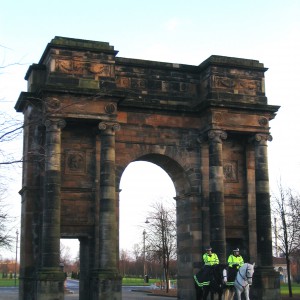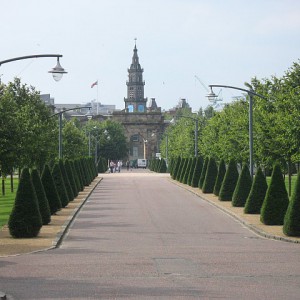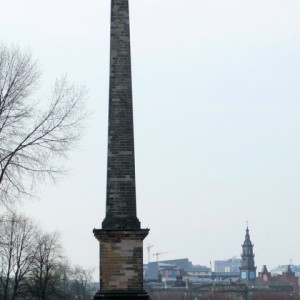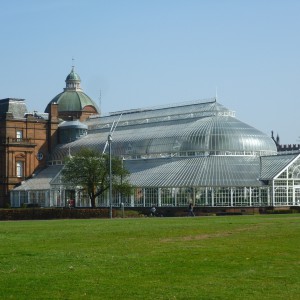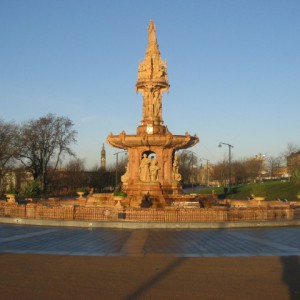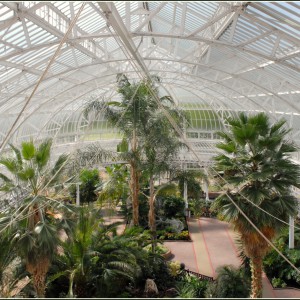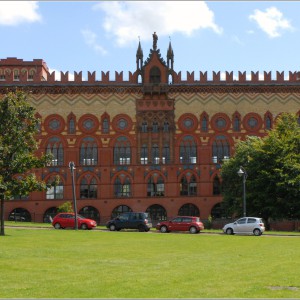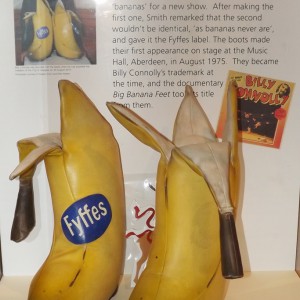Quick Adventures: Glasgow Green, The People’s Palace & Winter Garden
Glasgow Green is a great place for lazy wanderings and discovering more about the modern history of the East End.
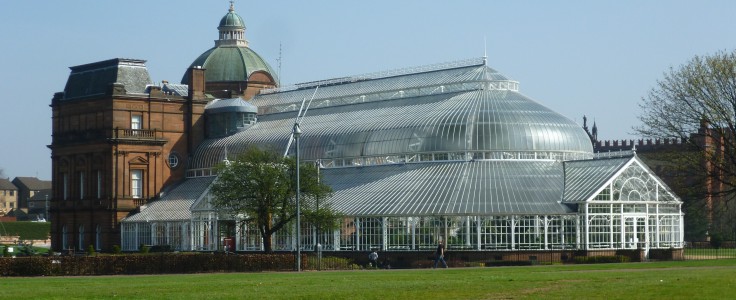
You probably noticed the huge amounts of pipers around Glasgow last week. That was the World Pipe Band Championships going on in Glasgow Green, one of the prized parks of Glasgow. You may have also been here before if you went to the Guy Fawkes/Bonfire Night, which is the largest display in Scotland. Glasgow Green is about 130 acres of river-front parkland just to the east of the city centre. Inside the many paths and grassy open spaces is The People’s Palace and Winter Garden, a weird architectural mash-up of a late 19th century civic building and a huge botanic glasshouse stuck right on the back of it. The Palace was a gift to the East End, which at the time was a collection of very deprived areas. It has kept to its original spirit over the years as a place of leisure and learning for the people of Glasgow. The Green itself was originally swampy and split by the Molendinar Burn (the same one from the Necropolis) and the Camlachie Burn. The area was first used for washing clothes and later on turned into the early modern period Glasgow institution — the ‘steamie’ wash-house. The washerwomen later on turned into protesting Suffragettes here on the Green.
Its westernmost edge is at the Saltmarket on the northern side of the Crown Street Bridge. I’ve probably lost you already as it’s quite frustrating to get to despite being so close to the city centre. But basically if you come out the southern exit of St Enoch Subway station (i.e. the one that doesn’t exit on to Argyle Street) then head straight until you get to the river, turn left and keep walking until you see the McLennan Arch at the northwest entrance to the Green. Or if you’re a Southsider then you can walk up through the Gorbals and cross the St Andrews Suspension Bridge just as the Clyde bends east and heads toward the city centre.
It’s a good place for some leisurely walks or cycles and is so vast that you can sit in peace at any point in the park, basically it’s the opposite of Kelvingrove Park on a sunny day. James Watt (of the James Watt Building fame) used to wander the Green, mulling over how to improve the steam engine. So it’s a good place to go for nice aimless meanderings when you want to think. You will also see the first civic memorial to Lord Nelson and his victories, a massive column to honour Britain’s greatest naval hero.
There’s a nice straight stretch of the river that some of the University watersports clubs play about on, just before the tidal weir. There’s also some ducks and swans who share the river with them, be wary of the swans. The tidal weir also means there’s distinct freshwater and saltwater areas, allowing two separate ecosystems. You too can play on the river if you join the Canoeing Club or the Boat Club.
Upon entering the Palace you will pass under a huge whalebone rib as you go up the stairs. There are many exhibits about Glasgow life that you can take on a roughly circular two-storey tour of the Palace. You’ll learn about the East End, the Red Road flats, the vermin catcher Smudge the Cat (who helped save the Vet School in 1989), going “doon the watter” (going down the Clyde, an old holiday favourite), slagging off the nearby town of Coatbridge and the musical history of Glasgow. All-in-all it’s a very thorough examination of a later part of Glasgow’s history, especially in the East End.
Adjoining the Palace is the Winter Garden — a huge glasshouse filled with tropical plants, including massive full-size palm trees. It’s reminiscent of the Kibble Palace in the Botanic Gardens, but much larger and open. It also has less plants and is more dedicated to people than to botany. It also has a small cafe if you want to stop now for a nibble, a drink or some ice cream.
At the back of the People’s Palace is the Doulton Fountain. When I first heard about Glasgow Green I wasn’t that interested until someone said “World’s largest terracotta fountain”. It has four facings showing scenes from the then British Empire — Australian sheep farmers, Canadian fur trappers, Indian Rajs and South African miners. Standing on top of the fountain is a larger-than-life statue of Queen Victoria.
The West Brewery is at the east edge of the Green, in part of the historic Templeton Carpet Factory (which itself is a stunning homage to the Venetian Doge’s Palace). It serves a large variety of its own brews that are subject to German purity laws. The big beer garden is perfect in the sunshine. They also serve food if you are tired of typical café food that you find in Glasgow museums. It’s a nice way to round off a trip to the Green and to have a drink of something that isn’t Tennents for a change.
Overall, Glasgow Green is a pleasant little trip to (almost) the East End where you can lounge about in the sun without interruption, take a lazy walk, cycle for hours, look at some greenery (both indoor and out), have a beer in a beer garden that’s much nicer than the grass at the Beer Bar, and learn about some modern history of Glasgow.
- The McLennan Arch at Glasgow Green.
- Avenue at Glasgow Green.
- Nelson’s Column, the oldest civic monument dedicated to Lord Nelson.
- Exterior of the Winter Garden with People’s Palace at the rear.
- The world’s largest terracotta fountain.
- Inside the Winter Garden.
- The former Templeton Carpet Factory.
- Classic Glasgow patter inside the People’s Palace.
